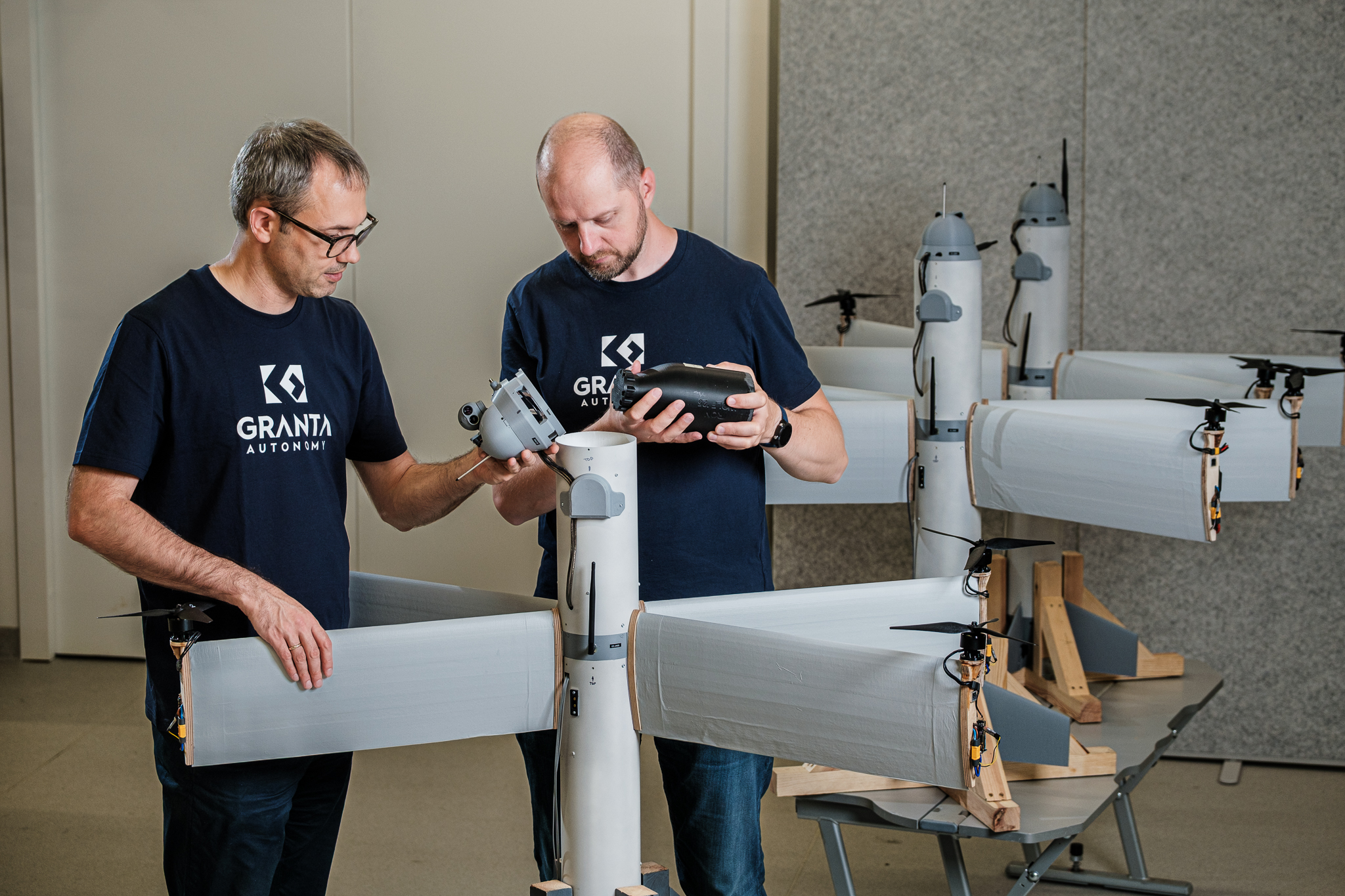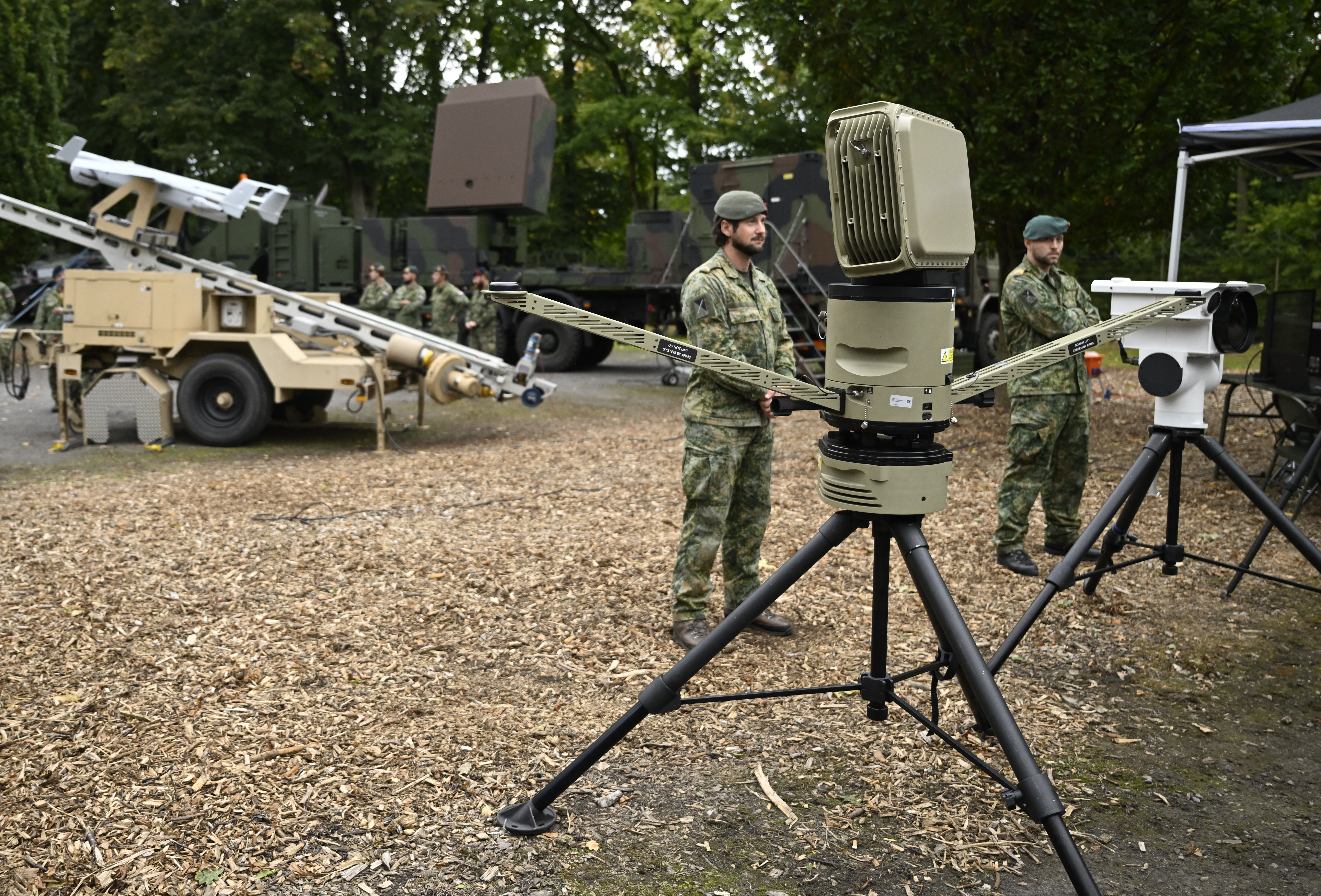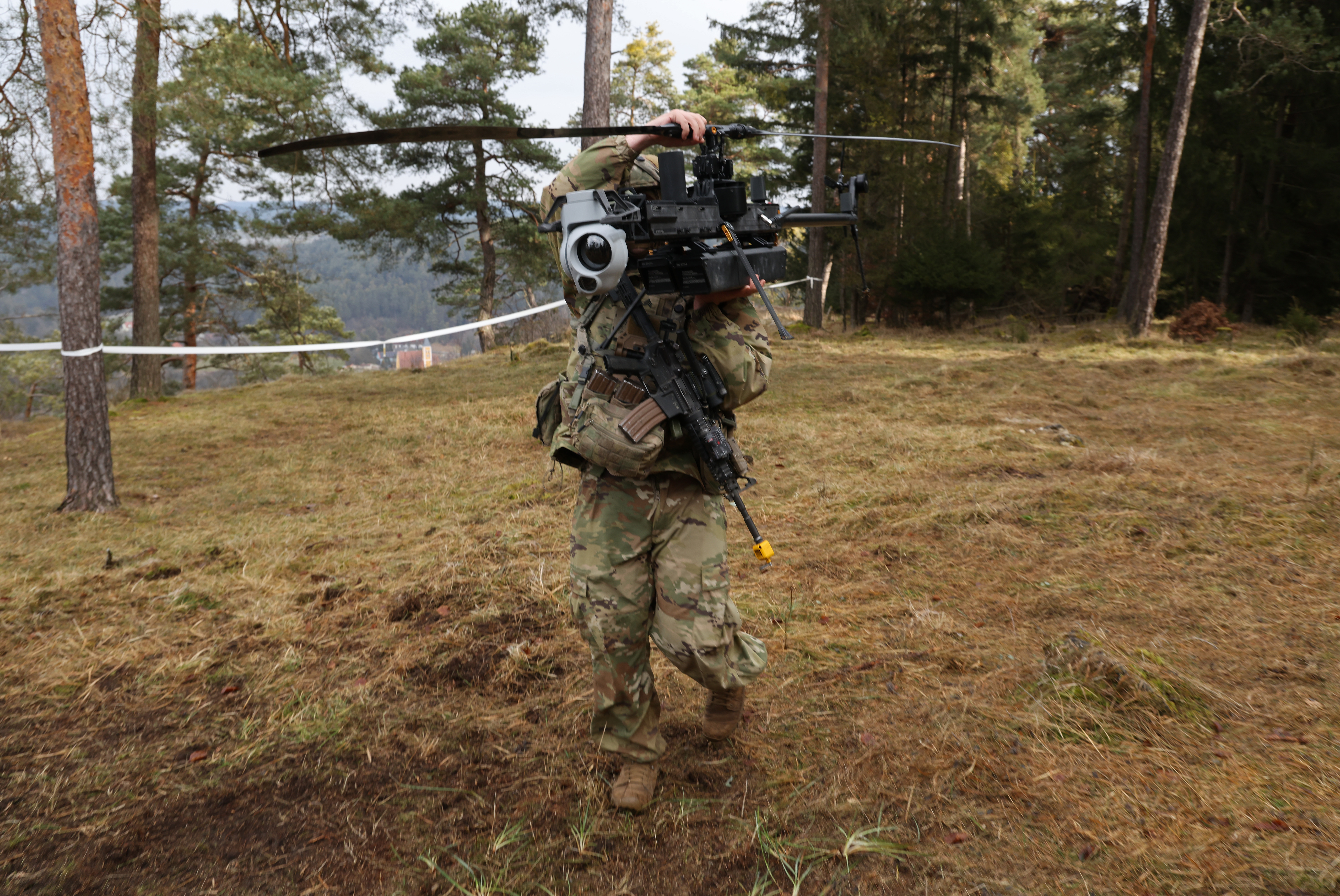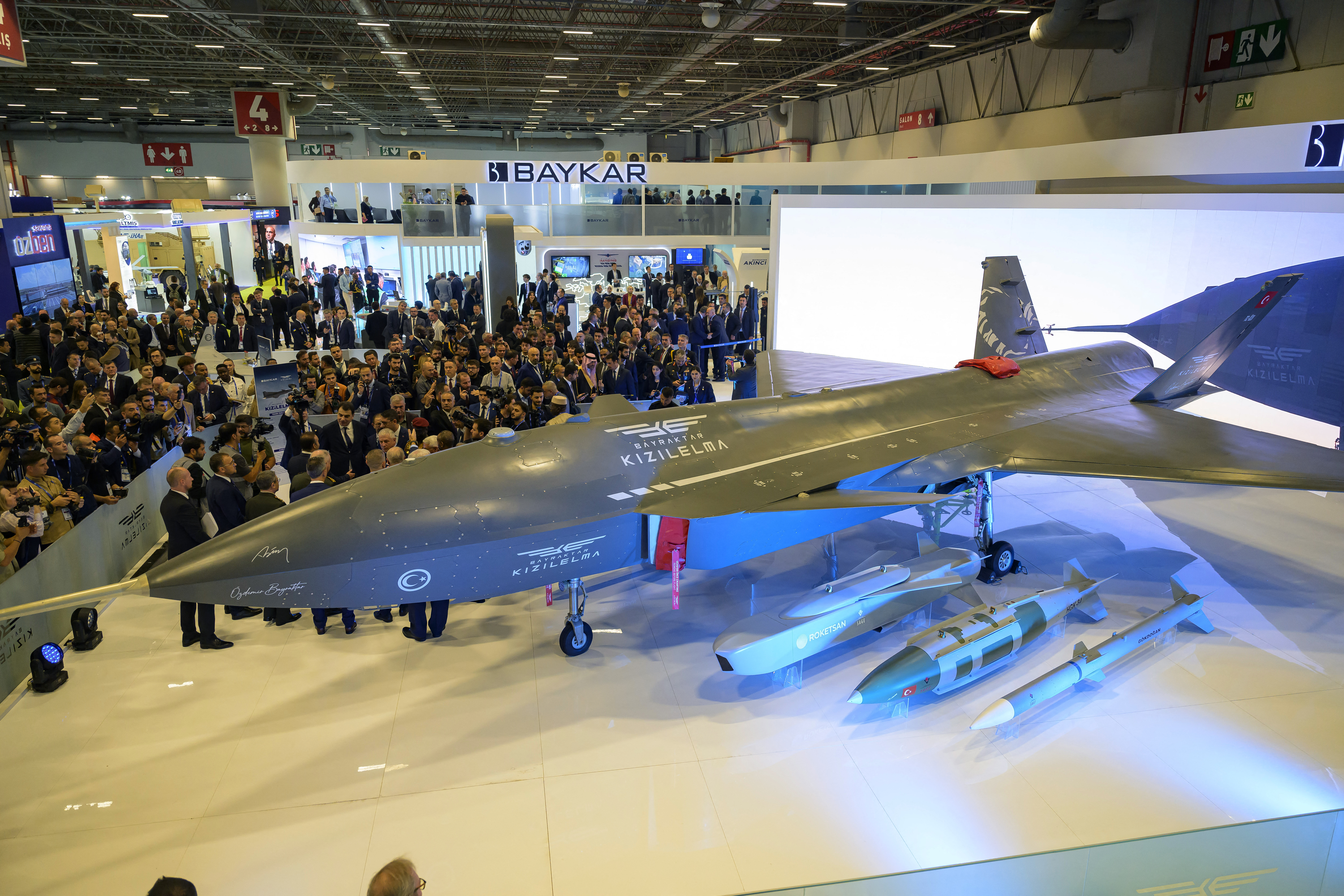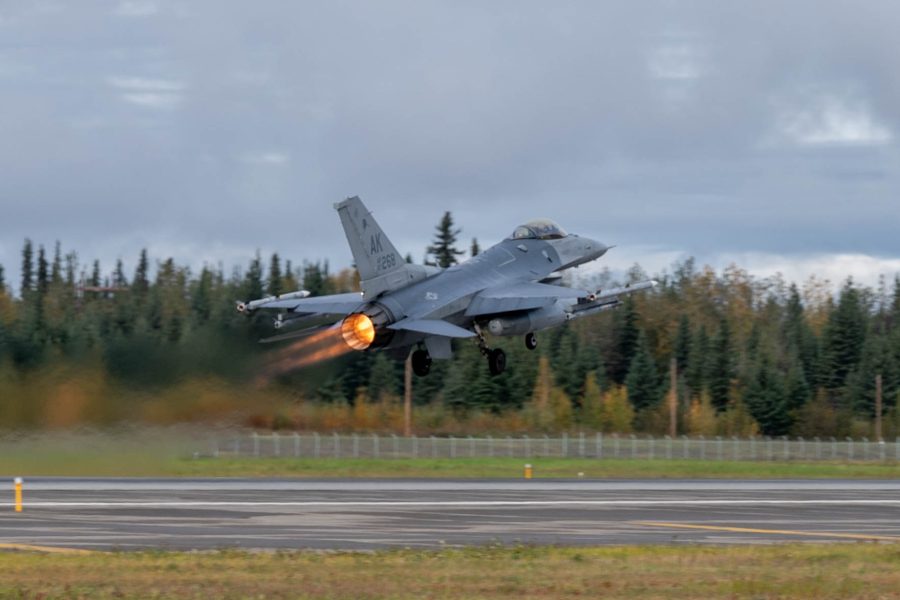
For the fourth time in a week, a Russian spy plane has been intercepted by U.S. Air Force F-16s near Alaska, according to North American Aerospace Defense Command. The most recent flight, which occurred Aug. 26, marks a dramatic uptick in Moscow’s approach operations near the U.S. by Il-20 COOT electronic intelligence surveillance aircraft.
The Il-20 was in the Alaskan Air Defense Identification Zone (ADIZ) for approximately 2 hours and 20 minutes, Canadian Armed Forces Capt. Rebecca Garand, a spokesperson for NORAD, told Air & Space Forces Magazine.
Garand said the closest point the Il-20 got to the U.S. mainland was 26 nautical miles north of Shemya Island, which is part of the Aleutian Islands.
Shemya Island is home to Eareckson Air Station, which hosts an Air Force-run airfield and a Space Force missile tracking radar station. The base also temporarily hosted around 130 Army soldiers last fall in a response to Russian and Chinese activity in the Arctic.
The Russian flight paths have varied, according to NORAD. On Aug. 20, an Il-20 flew some 25 nautical miles from Alaska’s St. Lawrence Island, located south of the Bering Strait.
On Aug. 21, an Il-20 flew approximately 100 miles from Cape Lisburne, which hosts a U.S. military outpost and is the northernmost point in Alaska. A flight on Aug. 24 flew 44 nautical miles west of Point Hope, also in northern Alaska.
Two F-16s and a KC-135 were launched by NORAD in response to all four flights, with the last three also being supported by an E-3 Sentry command and control aircraft.
Several nations’ vessels and aircraft are active in the region, and Russian motivations are yet unclear.
“This doesn’t happen all the time,” retired Air Force Gen. Glen D. VanHerck, former head of U.S. Northern Command, told Air & Space Forces Magazine. “But I don’t think this is any cause for concern. I think it’s normal, routine strategic messaging.”
Experts said the flights could also be tied to the large-scale U.S. Indo-Pacific Command-run exercise Northern Edge. That exercise involves some 6,400 service members, 100 aircraft, and seven naval vessels from the U.S. and Canada. Northern Edge included the USS Abraham Lincoln aircraft carrier, which has an embarked air wing that includes stealthy F-35Cs along with fourth-generation F/A-18 fighters and EA-18s electronic planes, and which participated in the exercise until Aug. 25.
“There is no doubt Russian intel collection efforts are targeting Northern Edge, as it is an exercise that often tests new equipment and tactics,” said retired Navy Rear Adm. Mark Montgomery, a senior fellow Foundation for Defense of Democracies.
The Il-20 is a secretive Cold War-era electronic intelligence gathering platform, normally spotted—and also intercepted—by NATO air forces in Europe in the Baltics.
The Il-20’s “limited capability” meant Russia was unlikely “to pick up anything of significance that we should be concerned about,” VanHerck said.
Russia has also deployed the plane to Syria, where one was shot down in a friendly fire incident in 2018 by forces loyal to the regime of Bashar al-Assad.
“Having somebody else’s intelligence collection platform around is a bit of a nuisance,” said Tom Shugart, senior fellow at the Center for a New American Security and a retired U.S. Navy submarine officer. “You might not use certain wave forms. You might not test certain things if you know there’s somebody watching.”
“I am sure this effort includes satellite efforts as well, by both Russia and China, but these aircraft have unique collection capabilities,” Montgomery added of Russia’s likely attempt to surveil Northern Edge. “U.S participants will have standard operating processes in place for operating in the vicinity of intelligence collection aircraft in order to minimize or eliminate the chance of technology and tactics compromise.”
In addition to the U.S. and Canadian military exercise, there is a flotilla of five Chinese icebreakers and what Beijing says are research vessels currently operating in the Arctic as well, having traveled past Alaska near the beginning of August.
The Russian flights also follow a summit this month at Joint Base Elmendorf-Richardson, Alaska, between President Donald Trump and Russian President Vladimir Putin. Trump ordered a display of the U.S. Air Force’s stealth aircraft for the meeting. The talks over Russia’s war in Ukraine kicked off with the two leaders walking between F-22s stationed at the base and a flyover by F-35s and a B-2 stealth bomber.
“I would point out that when Putin recently put his feet on the ground in the United States of America, in Alaska, we flew over a nuclear-capable bomber and fifth-generation fighters. That likely set off some thoughts in his mind about counter-messaging,” said VanHerck, who commanded NORAD and U.S. Northern Command from 2020 to 2024. “Putin still wants to be viewed as a global power, and he will do whatever it takes to message that he still has the ability to conduct military operations far off of Russia’s coastline, and globally at times.”
While the Alaskan ADIZ has close proximity to Russia, NORAD stated that the airspace requires the “ready identification of all aircraft in the interest of national security,” which prompts multiple intercepts with Russian aircraft annually, although usually not at such a high frequency.
Last month, NORAD intercepted two Russian Tu-95 “Bear” bombers and Su-35 “Flanker” fighter jets that were escorting them when they were in the ADIZ for some three hours.
The U.S. military conducts flights in other countries’ declared ADIZ areas, too, especially around disputed islands in the South China Sea, which the U.S. insists are in international airspace.
In its statements, NORAD stressed the Il-20 flights are “not seen as a threat.”
The Russian Ministry of Defense and the Russian Embassy in Washington did not respond to requests for comment when asked about the flights.
Officials from NORAD have declined to speculate on whether the Russians are attempting to surveil U.S. ships or aircraft and say whether the Il-20 flights have passed in the vicinity of allied warships.
“The mission of NORAD is aerospace warning, aerospace control, and maritime warning in the defense of North America. It is not our role to speculate on foreign intent,” said Garand.
The post Experts Urge Caution as NORAD Intercepts Russian Spy Planes 4 Times in Week appeared first on Air & Space Forces Magazine.

Air, ADIZ, Air Defense Identification Zone, Alaskan Air Defense Identification Zone, Gen. Glen D. VanHerck, NORAD, North American Aerospace Defense Command, Northern Edge, Russia
Air & Space Forces Magazine
[crypto-donation-box type=”tabular” show-coin=”all”]

